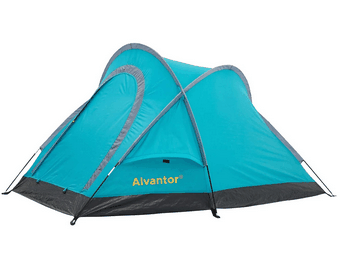There’s nothing quite as exhilarating for a kid as a secret den, a hideaway to hole up in, play make-believe games, read, and retreat, especially when snow or rain strikes. A tent can make a nice roomy spot to store toys and stuffed animals in your child’s playroom.
Here are some important factors you need to consider to find a kid’s tent that will turn indoor stay into adventure time.
Tent Type
This is probably the first thing you should keep in mind when shopping for kids’ tents. There are three common types available today: air-supported tents, stick-supported tents, and pop-up tents. Obviously, the choice will come down to the size and your child’s preference.
Air-support tents: The name says it all – these are tents that stay inflated and hold their shapes thanks to fans that continuously blow air into them. As such, they will start to lose shape once the fan is turned off. Notably, air-supported tents are typically larger than other styles, so they are a great choice if you’ve several little ones to entertain.
Stick-supported tents: Tents of this type are propped up by poles or “sticks” typically made of plastic or wood with foldable joints much like what you’ll find in the modern collapsible tables and camping tents. As you might imagine, they are much more stable and sturdier than other types of tents but are a little difficult to set up. If you’re looking for a tent that will last longer, there’s your answer.
Pop-up tents: As soon as a pop-up tent is unboxed, it automatically “pops” into its desired shape courtesy of a flexible metal structure. These thin, bendable metal pieces can fling open and fold up for effortless packing and storage.
Pop-up tents are the cheapest of the bunch and quite lightweight, making them a great portable option. The trade-off for the flexibility and low price point is that these tents can easily get broken or ripped, so they aren’t exactly strong.
The Size and Shape of the Tent
Tents designed for kids’ play come in a huge variety of shapes. Some are whimsical figures designed to look like circus tents, rocket ships, castles, or cartoon characters. Some are modeled after automotive themes, such as earthmovers, fire trucks, or luxury cars.
Some follow traditional shapes, with rectangular, circular, teepee, and domed shaped tents being the most sought-after. No matter what you choose, you’ll need to ensure before making the purchase that you’ve enough space for the tent in its set-up or unfolded size. More importantly, the shape should match your kids’ tastes.
Talking of size, the average kid’s play tent will take up 3-4 sq. ft. of space. At this size, it can fit snugly in a room’s corner and can hold up to 3 toddlers. They’re probably just big enough for 1-2 elementary school children/preschoolers.
A third grader, on the other hand, might not feel too comfortable in something of this size. Thankfully, you’ll find an assortment of larger models out there. Specifically, opt for a tent with a base that measures 50-60 inches if you’re buying for an older kid.
Patterns, Prints, and Themes
Most tents have prints of favorite movies, TV shows, cartoon characters, and other pop culture fantasies. It all boils down to what your kid loves. For instance, if your little one yearns for dogs, opening a tent with puppies on it will give your kid an instant thrill. Unfortunately, the only downside is that there comes a time when your kid will no longer be into dogs.
Circus, wildlife, pirate ships, castles, and rocket ships are some common themes appearing on children’s tents. Once again, these themes are awesome and loved by kids, but some children will soon outgrow a specific theme while still into play tents.
That is why most experts recommend that you get a tent in a solid color pattern or scheme. These are particularly ideal if you’re after entertaining kids of several kids of varying ages. A solid hue like red, blue, or green is a great gender-nonspecific choice that’ll serve your child well for many years.
Added Fun Features – Ball Pits and Crawl Tunnels
For added fun and play, some tents integrate a crawling-style tunnel into the setup as an extension or attachment. Most of these collapses and assume a flat position for easy storage. Most tunnels measure 4ft long and 19″ in diameter and are often detachable so you can use them on their own.
Another fun add-on is a ball pit usually fitted at one end of the crawl tunnel while the tent is attached to the other end. This way, your little ones can enter the tunnel from the tent and crawl through until they find themselves in the pit.
Tent Prices
Kids’ play tents come in different price ranges. Inexpensive models cost as low as $10, and they will only offer an easy and quick thrill for your child. These cheap tents are not likely to last, and the flimsy fabric can easily tear.
